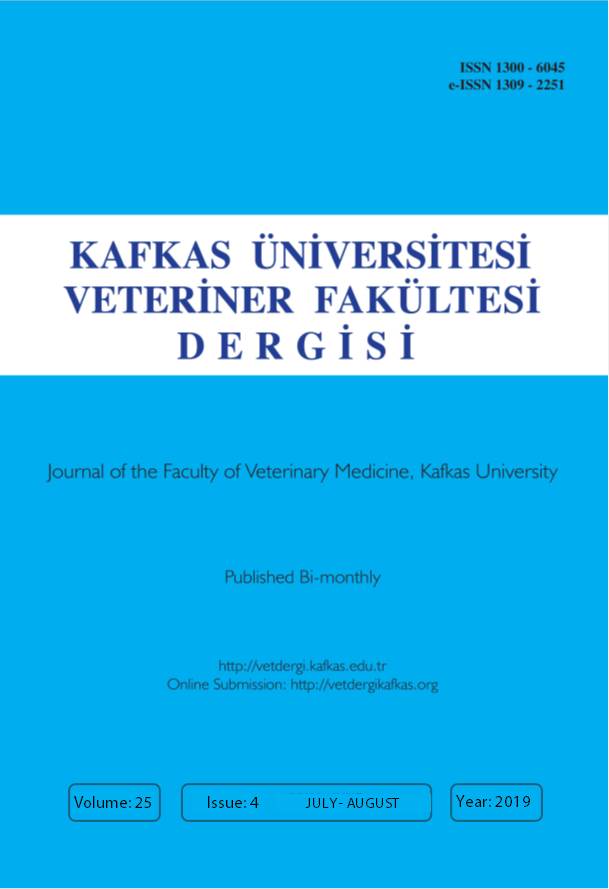
This journal is licensed under a Creative Commons Attribution-NonCommercial 4.0 International License
Kafkas Üniversitesi Veteriner Fakültesi Dergisi
2019 , Vol 25 , Issue 4
Growth Performance and Meat Quality in Tibetan Sheep Fed Diets Differing in Type of Forage
1College of Animal Science and Technology, Hunan Agricultural University, Changsha, 410125, CHINA2Key Laboratory for Agri-Ecological Processes in Subtropical Region, and Hunan Research Center of Livestock & Poultry Sciences, and South Central Experimental Station of Animal Nutrition and Feed Science in Ministry of Agriculture, Institute of Subtropical Agriculture, The Chinese Academy of Sciences, Changsha, 410125, CHINA
3Department of Animal science and Veterinary medicine, Tibetan Autonomous Prefecture Academy of Agricultural and Animal Husbandry Science, Lhasa, 850009, CHINA
4Hunan Co-Innovation Center of Animal Production Safety, CICAPS, Changsha, 410128, CHINA
5State key laboratory of hulless and yak germplasm resources and genetic improvement, Lhasa, 850009, CHINA
6Animal Science Department of Agriculture and Animal Husbandry College, Qinghai University, Xining, 810016, CHINA DOI : 10.9775/kvfd.2018.21144 The Qinghai-Tibetan Plateau is a large and elevated plateau (mean elevation 4500 m) in northwestern China, where with a harsh environment for animal survival. Tibetan sheep is an important dominant livestock that inhabit this harsh environment. The objective of this trial was to preliminarily explore and compare the effects of indigenous barley straw (BS) and artificial cultivated oat hay (OH) on growth performance, visceral organ mass and meat quality of Tibetan sheep. Twenty-four Tibetan sheep with initial weights of 15.9±1.92 kg were randomly assigned to two mixed diets containing the same concentrate mixed with BS or OH, and the experiment was carried out in a completely randomized design. The weight of lungs and thymus for OH was greater (P≤0.05) than that of BS, while the weight of other viscera (heart, liver, kidney, epinephros and spleen) had no significant difference (P>0.05) between the two. The weight of the rumen, reticulum and abomasum for OH was 10.31%, 31.22% and 33.44% (P≤0.01) higher than that of BS. The length of the colon in sheep fed OH diet was longer (P≤0.01) than the sheep fed BS diet. The content of Histidine in longissimus dorsi muscle of OH was greater (P≤0.05) than that of BS, while there were no significant (P>0.05) differences between the two for the other individual amino acids (AA), umami AA, essential AA and total AA. It is concluded that the two types of roughage did not affect the growth and slaughter performance, meat quality, but OH is beneficial for the gastrointestinal development for Tibetan sheep. Keywords : Tibetan sheep, Growth performance, Meat quality, Forage










